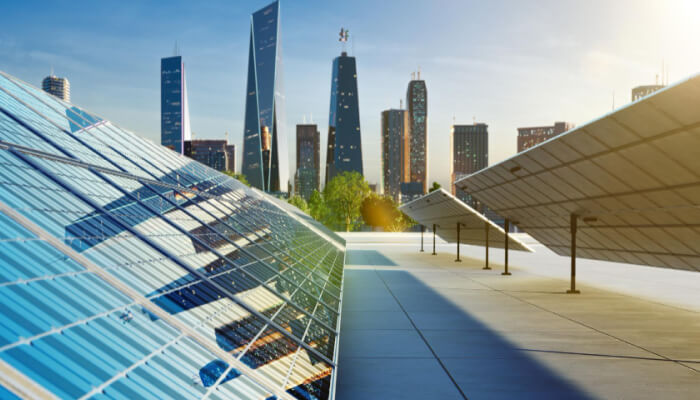


Climate change is accelerating with each passing day, pushing businesses and governments around the world to reduce their carbon footprint. Among the most popular blueprints leading green building efforts globally is the Leadership in Energy and Environmental Design (LEED) certification. Led by the U.S. Green Building Council (USGBC), LEED offers a holistic model for green building design, construction, operation, and maintenance. With sustainability now an imperative, LEED principles to be understood and followed can not only lower the ecological footprint but enhance brand value, operational performance, and bottom-line financial returns as well.
LEED certification is an internationally accepted mark of sustainability success. Created in 1993, it provides a point-based rating system for buildings, concentrating on issues such as energy consumption, water conservation, material selection, and indoor environmental quality. The certification has four tiers—Certified, Silver, Gold, and Platinum—depending on how many points a project accumulates in various categories of sustainability (USGBC).
As of 2023, the U.S. Green Building Council (USGBC) reports that globally, there are over 185,000 LEED projects covering more than 28 billion square feet. In the Middle East and North Africa (MENA) region alone, there has been more than a 400% increase in LEED projects since 2010 due to government regulations and increased corporate interest in Environmental, Social, and Governance (ESG) criteria.
LEED-certified properties normally consume 11% less water and 25% less energy. Long term, this results in compounded savings to improve profitability.Designed by Zaha Hadid Architects, this LEED Platinum-certified facility achieved a 45% reduction in estimated energy use through optimized building shape and orientation, installation of solar panels, and wind-catchers.
LEED-certified buildings have demonstrated financial advantages, including higher rent premiums and increased asset values. For instance, a CBRE analysis of 20,000 U.S. office buildings found that LEED-certified properties commanded an average rent premium of 31% over non-LEED counterparts. Even after adjusting for factors like location, age, and renovations, the rent premium remained at 3.7%.
Investors and customers are increasingly attracted to sustainable businesses. LEED certification is an independent validation of your commitment to sustainability, enhancing your ESG narrative and stakeholder trust.
A study published in the journal Building and Environment found that workers in LEED-certified office spaces saw a 30% reduction in absences and a 26% improvement in cognitive performance. Better indoor air quality and natural light significantly influence employee health.
LEED evaluates sustainability in several important categories:
Each category includes minimum requirements and bonus credits. Projects must meet the minimum requirements in each category and may then gain points toward certification based on how many extra sustainability practices they implement.
The LEED certification process typically includes:
The initial cost of green technologies, sustainable materials, and LEED documentation is one of the largest challenges for businesses. Long-term energy, water, and maintenance savings, however, repay many of these costs several times over.
LEED certification involves rigorous planning, record-keeping, and performance monitoring. Without the expertise of advisers, businesses are at risk of losing precious credits or delays.
Often a complex matter to deal with local building regulations and aligning them with LEED standards, especially in localities where there are few incentives for green buildings.
Clenergize provides full sustainability advisory solutions from inception through completion, supporting companies in achieving LEED certification and maximizing ROI.
Clenergize performs rigorous feasibility analyses to determine best level of certification and strategy for your project. We help establish early design strategies that save money and maximize credits.
We work with architects and engineers to incorporate sustainable building features such as passive cooling, efficient lighting, and renewable energy systems. Advanced energy modeling software forecasts energy use and savings.
Clenergize manages all LEED documentation to provide accurate substantiation of each credit with verifiable data. Our staff works directly with USGBC reviewers to streamline approval.
Our commitment does not stop at certification. Clenergize uses IoT-based technology to monitor building performance and ensure sustained compliance with LEED standards.
An international logistics company hired Clenergize to green its new 50,000 sq. ft. headquarters in Dubai. We helped the customer:
The project scored 72 points and was certified LEED Gold in 18 months. The client saved AED 500,000 in operating costs per annum and improved its ESG rating among investors.
LEED implementation is expanding widely throughout the Middle East. There are over 650 LEED-certified buildings in the UAE alone, ranging from flagship projects such as Masdar City and DEWA’s Sustainable Building, the world’s largest government building to be certified LEED Platinum (Masdar and DEWA).
Saudi Vision 2030 features strong emphasis on sustainability with many projects within NEOM striving for LEED Gold or greater ratings.
In the future, as technology gets better, LEED certification is going to converge more strongly with:
Companies looking to future-proof their facilities are increasingly pairing LEED with digital solutions that drive long-term performance and compliance.
LEED certification is not just a wall plaque—it’s a holistic strategy that returns concrete environmental, economic, and social returns. As sustainability becomes the new currency of corporate worth, getting on board green building certification early can assist companies in becoming more resilient, engaging stakeholders, and remaining in compliance with changing regulations.
Whether you’re designing a new facility or retrofitting an existing building, Clenergize provides the expertise, technology, and alliances to make LEED certification a reality for you.
Looking to move to the next stage of LEED certification? Talk to Clenergize now and learn how we can power your path to sustainability.